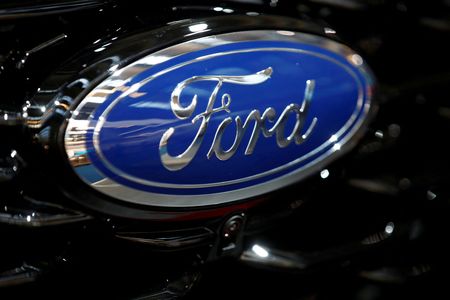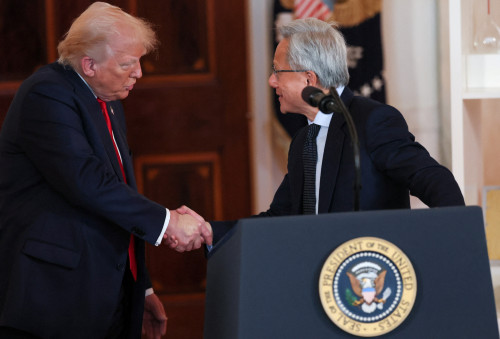By Joseph White, David Shepardson and Ernest Scheyder
DEARBORN, Michigan (Reuters) – Ford Motor Co on Monday unveiled an ambitious strategy to profitably ramp up electric vehicle sales but faces a challenge to slash $7 billion in costs and regain credibility on Wall Street.
“You’re not going to believe us until we start delivering it,” Ford Chief Financial Officer John Lawler said at an investor day presentation. “Because we’ve told you this before. That’s the truth. We have and we haven’t delivered. So we have to prove it. We can talk about it, but we have to prove it.”
Ford, whose shares fell 1% at midday, estimated its total costs are $7 billion higher than its competition.
Ford also unveiled new supply deals for battery-grade lithium as the U.S. automaker aimed to meet its target of producing 2 million electric vehicles by 2026, closing the gap on market leader Tesla Inc.
“We’re so far behind on waste and cost,” Ford CEO Jim Farley said. In February, Ford predicted a difficult 2023, blaming chip shortages and other supply chain issues and production “instabilities” that raised costs.
North American automakers are racing to secure supplies of battery materials to boost EV output as demand surges for environmentally friendly vehicles, and to take advantage of U.S. tax credits.
The deals announced Monday mark an expanded bet by Ford on direct lithium extraction (DLE) technology, an emerging crop of unproven filtration technologies aimed at revolutionizing how the metal is produced for the EV industry.
Under their terms, Albemarle Corp and Nemaska Lithium will supply lithium hydroxide, a primary ingredient in the cathode of lithium-ion batteries, over five and 11 years respectively.
Albemarle will supply more than 100,000 metric tons of lithium hydroxide for about 3 million future Ford EV batteries, the companies said.
Albemarle shares rose 1.5% to $207.20.
Ford Vice President Lisa Drake said the agreements carried significantly less risk that relying on investments in junior producers.
Lithium, a key component in most modern EV batteries, has a higher energy density than traditional battery inputs, allowing batteries to be compact with higher storage capacity, crucial to ensure long distances between charging.
Under other deals, privately held EnergySource Minerals will supply Ford with lithium hydroxide from its Imperial Valley, California site, which is expected to be operational in 2025, it said, while Compass Minerals will provide lithium carbonate.
Doubts linger on Wall Street about legacy automakers’ ability to hit the lofty targets set for EV production. Ford has said it would have a global capacity to build 600,000 EVs by the end of 2023.
The U.S. automaker on Monday reaffirmed its full-year forecast of $9 billion to $11 billion of adjusted earnings before interest and taxes and about $6 billion in adjusted free cash flow. It continues to expect its electric vehicle unit to lose $3 billion this year.
Ford said its next-generation electric truck will have a 30% lower labor and overhead cost than its current gas-powered truck.
Nemaska Lithium is equally owned by the Quebec government’s economic development agency Investissement Quebec and lithium company Livent. Ford will be its first customer.
Chile’s SQM, the world’s second-largest lithium producer after Albemarle, signed its own long-term supply agreement with Ford on Monday, though neither company specified the number of years.
(Reporting by Abhijith Ganapavaram and Shivansh Tiwary in Bengaluru; Additional reporting by Joe White in Dearborn, Michigan, David Shepardson in Washington and Ernest Scheyder in Houston; Editing by Sriraj Kalluvila, Bernadette Baum, Jan Harvey and Richard Chang)





